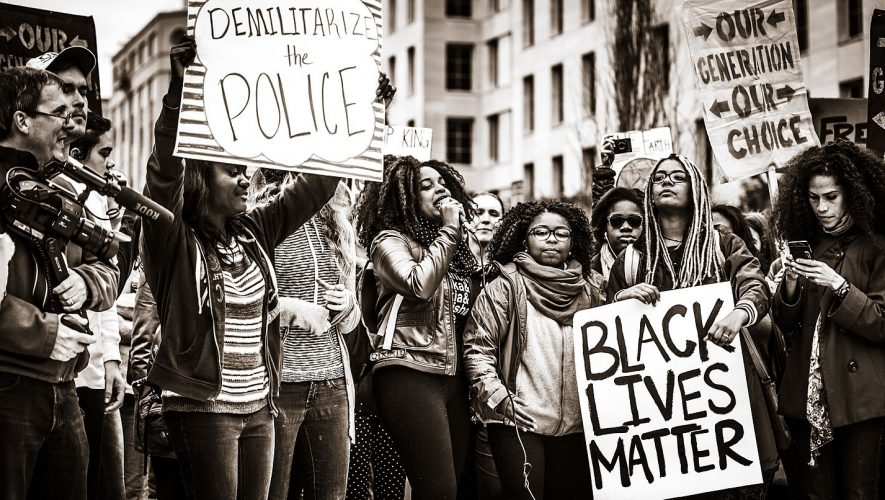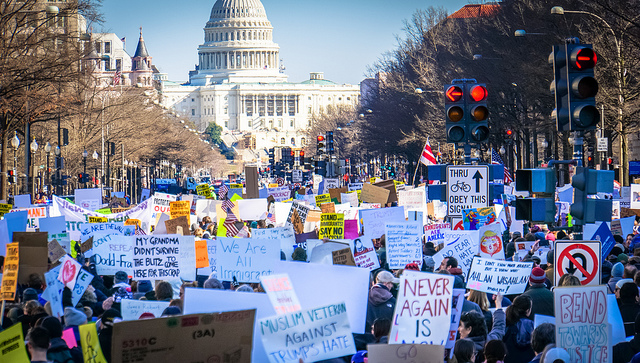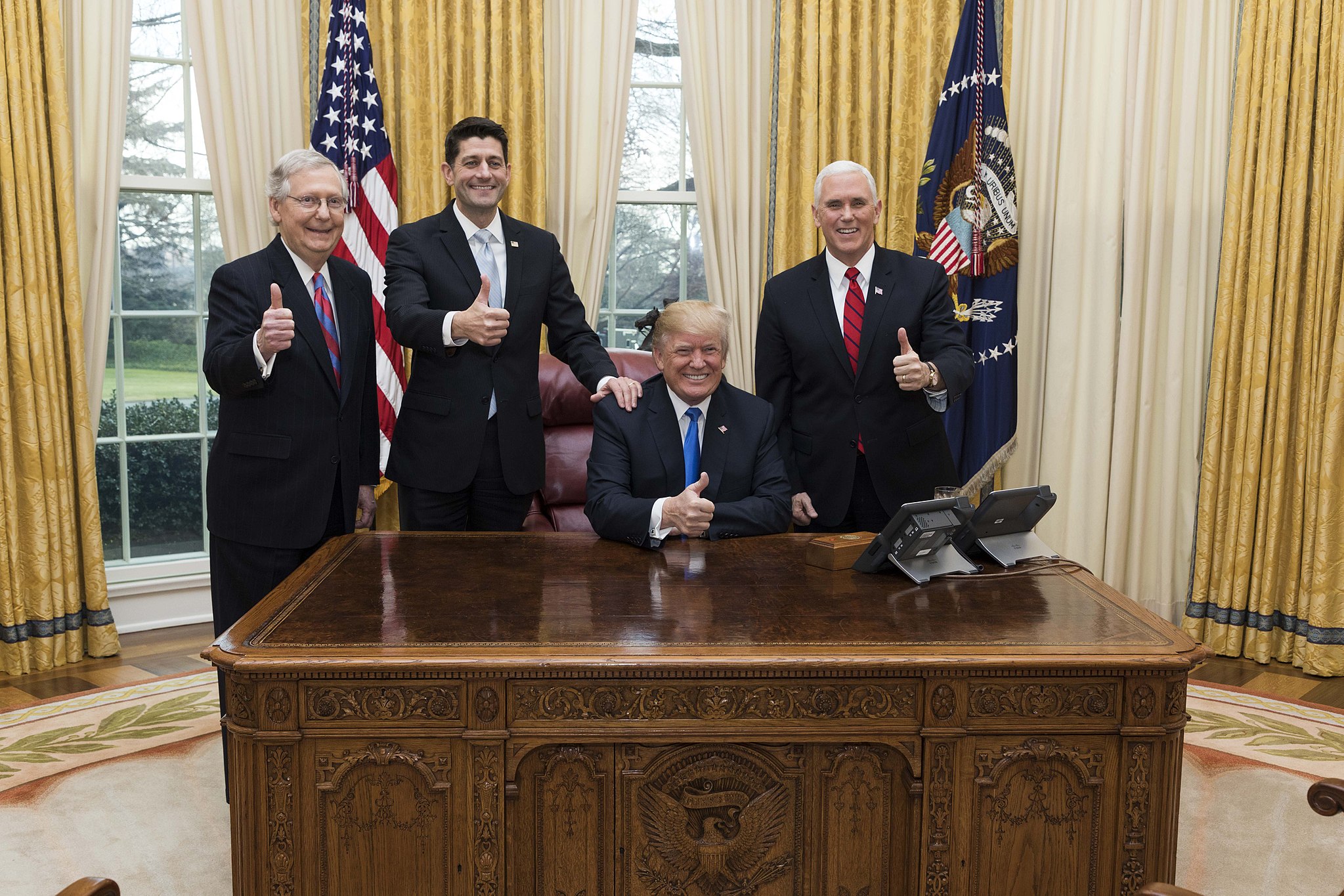Content warning: This article discusses physical and emotional violence and trauma against Black and Indigenous People of Color (BIPOC), LGBTQ+ folx, and immigrants.
On May 25, George Floyd, a Black Minneapolis resident, was murdered at the hands of the state. Then-officer Derek Chauvin pinned Floyd to the ground by his neck, brutally strangulating him while his partners Thomas Lane, J. Alexander Kueng, and Tou Thao watched.
It was, as Floyd’s brother Philonise recounted to Congress, “a modern-day lynching in broad daylight.” Chauvin’s knee remained there despite Floyd crying “I can’t breathe” and onlookers begging the officer not to kill him. His knee held firm against Floyd’s neck even after Floyd lost consciousness and paramedics arrived.
Since then, police violence, systemic racism, sweeping legal reform, and police abolition have been brought to the forefront of American consciousness. There has been a tremendous uptick in resources and visibility on social media as people are increasingly mobilized to take direct action for justice.
But with this increased visibility and activism, there has also been an insidious edge—a record-setting number of murders of transgender BIPOC. As of November 7, Human Rights Campaign estimated that at least thirty-four transgender or gender non-conforming people have been murdered, making 2020 the deadliest year since the organization started tracking in 2013. Twenty-seven were Black and Latinx trans women, pointing to the dangers of hyper-visibility—a paradox that arises when trans lives are simultaneously made spectacle and erased—as discussed in the documentary Disclosure.
The American Medical Association declared the continued murder of trans women an “epidemic” in 2019. Laverne Cox, a leading Black trans actress and a subject of Disclosure, urges skepticism as few are elevated while many struggle.
It is also undeniable that there have been great strides for many people with intersectional identities in this reflection of social duality. The socio-political climate has forced all entities—corporations, institutions, and people—to evaluate who they are, what they stand for, and what they stand behind. It is hard to decipher, however, whether this is genuine support or capitalization and monetization of a movement dedicated to the preservation and celebration of BIPOC and LGBTQ+ lives.
White Fragility and Trauma Porn
This movement has been a rude awakening for many non-Black people. Those who claim to be “color-blind”—which harmfully enforces the idea that race does not have real-world implications or social power—had the privilege to stay sheltered from the most horrific aspects of the police state and criminal punishment. Those same people are now pushed to confront race and their own prejudice, preconceptions, and attitudes.
This movement of personal confrontation has resulted in many episodes of White fragility (read: defensiveness and entitlement) in those who were once comfortable ignoring their own racial biases. But it has also been a time for re-definition and learning, as many have embraced tenets of anti-racism like those popularized by author Ibram Kendi, who argues that institutional change for BIPOC requires deliberate, liberative action. It is complacent to simply be “not racist.”
Beyond changing language and widespread arrests, this stark resurgence of the Black Lives Matter movement has been marked in duality by immeasurable mourning. It seems that each news story brings another name added to “In Memoriam.” But while it is important to know their names—George Floyd, Tony McDade, Breonna Taylor, Rayshard Brooks, and Jacob Blake (the list is endless)—and honor their memories, the spreading of police brutality videos on social media can quickly turn into trauma porn, crossing the line between allyship and exploitation.
Increasingly, this country is confronting the fact that we do not live in a post-race society. Race and America’s definition, discussion, and teaching of it have sustained and promoted racism and inequality since the founding of this country on stolen land. Our “justice” system brutalizes and discards Black and brown lives and serves to punish, not rehabilitate.
Widespread Support and Mobilization
In June, two-thirds of American adults expressed support for the Black Lives Matter (BLM) movement. An estimated fifteen-to-twenty-six million people protested for Black lives on June 6, reported as the peak turnout for on-the-ground engagement this year. This makes BLM the largest protest movement in US history, surpassing the cited engagement numbers in the 1960s Civil Rights Movement.
Widely accessible information on the internet, easier travel, and better reporting boosted engagement, as organizers used tools like Instagram to drive turnout. And while many believe the future is bleak for race relations, the protests’ racial diversity was unprecedented. But support waned in the months since as the public refocused its attention elsewhere.
What about Portland?
It is easy for White liberals in Democratic-controlled states to ask “How could this happen here?” when presented with police violence and backlash against it. But it isn’t about bad apples and one-off violence. It’s about the appointed law enforcement that has systematically oppressed communities of color for generations.
This “how could this happen here” logic took on a different meaning as protesters clashed with the officers they were protesting. These interactions quickly escalated to violence and brutality, with police using riot gear and crowd-control methods to target and suppress reporters and protesters. Media coverage and social media exposure of the protests was initially widespread, especially early on when some demonstrations were largely characterized by looting or riots. But mainstream attention withered as violent activity waned. That is, until shocking images and videos from Portland began surfacing on social media.
Demonstrations there had persisted since the start of the George Floyd protests, and many reported abusive police tactics, including the use of riot-control agents. Then on June 26, Donald Trump signed an executive order “to protect statues, monuments, and federal property,” which led to the formation of the Protecting American Communities Task Force under the Department of Homeland Security five days later. That same day, Trump deployed federal officers to Portland to quell “violence.”
Federal agents responded aggressively, firing pepper balls at demonstrators and using tear gas, exploiting a loophole in a new Oregon law banning it. Officers used “less-than-lethal” munitions and chemical irritants which still do plenty of harm, including accelerating the spread of COVID-19. Despite their stated purpose to minimize violence, officers agitated protesters openly and made a relatively peaceful demonstration much more volatile. Such abuses of authority often prompt law-abiding protesters to adopt more extreme tactics.
To top it off, federal officers dressed in full tactical gear and patches that read only “POLICE,” were reportedly snatching protesters off the streets and shoving them into unmarked minivans. They were then being transported, detained, searched, questioned, and eventually released, leaving most unaware whether they were charged with a crime or why they were stopped at all. Local police arrested nearly one thousand protesters; we don’t know, and may never know, how many were detained by federal officers.
The official stance of Customs and Border Protection (CBP) is that they were stopping people suspected of crimes such as officer assaults and property destruction. They used minivans to transport these people to a secure location for proper questioning. This essentially gives federal officers free reign on who they can stop and what they can do, turning arrests into kidnappings.
Months of pandemic devastation and a sputtering economy torpedoed Trump’s popularity, and mass protests did not help. He took a page out of the Nixon playbook and campaigned as a “law and order” president. But in trying to project strength to his base, Trump only exacerbated violence on the ground in Portland and other cities around the country. In a press briefing, Portland Mayor Ted Wheeler explained that the situation on the streets was de-escalating before Trump’s troops showed up.
Trump’s leadership highlighted his negligent attitude towards the safety and wellbeing of his citizens. He has been very critical of the Movement for Black Lives and is attempting to silence its participants by any means necessary. Acting Homeland Security chief Chad Wolf has repeatedly referred to demonstrators as “violent anarchists” to justify actions against mainly peaceful protesters, showing the government’s indifference towards brutalizing its own people. Aggression from police and federal officers creates a hostile response from those participating on the ground, which police use to justify excessive force.
Many legal scholars and US attorneys are mortified by what happened in Portland—the breaches of authority, violations of the Constitution, and the potential precedent this response sets. Police who operate in this fashion infringe on more rights than they protect.
Protests in Portland ramped up throughout August, but tension spiked between police and demonstrators after another police shooting of a Black person halfway across the country. On August 23, police in Kenosha, Wisconsin shot Jacob Blake seven times in the back as Blake attempted to enter his car. Witnesses say Blake was simply breaking up a fight before the incident and wasn’t causing any harm, but a depressingly familiar police response still paralyzed him from the waist down.
By day, Kenosha was flooded with peaceful protesters, denouncing the irresponsible reactions of the police. By night, rioters set the city ablaze in reaction to the shooting. The president deployed federal agents to the city, snatching people into unmarked cars and holding them without charges. Activity in Portland shot up in tandem as local police arrested twenty-three people on the day of the shooting and and twenty-nine more in the following three days.
Alt-Right Militia Recruitment
In addition to the presence of militarized police, many right-wing, self-declared militia members brandishing assault weapons attended the protests in an attempt to keep the peace and protect businesses from looters. The “Kenosha Guard” recruited members on Facebook and attempted to mobilize a response to the unrest. These armed “peacekeepers” only made tensions worse, ultimately leading to the fatal shooting of two BLM protesters and severe wounding of a third. The shooter, Kyle Rittenhouse, a White seventeen-year old from Illinois, was allowed to leave the protests and was arrested peacefully in his home days later. Rittenhouse’s comments and social media activity show that he thought of himself as a militia member responsible for guarding property and lives.
A few days later, a caravan of Trump supporters in pickup trucks drove to the center of downtown Portland, where they almost instantly confronted protesters of police brutality. Amid the chaos, a brief altercation led to a right-wing counter-protester getting shot and killed in the street.
Enter Trump, who visited Kenosha after days of sustained rioting and fires. He praised the National Guard and local police, toured damaged businesses and buildings, and likened the “anti-American” protesters to domestic terrorists. Trump also packaged protest footage into eerie ads depicting “Joe Biden’s America”—even though he is president—to drive his “law and order” narrative.
Trump’s America
The intense presence of local police, federal agents, and rifle-wielding counter-protesters could not prevent massive property damage, widespread injuries, and deaths during protests. The flashes of chaos and clashes we see on the news are vignettes of Trump’s America, no matter how much he points the finger away. When Trump says he is a “law and order” president, he really means that he has no intention of ensuring the safety and security of all Americans. His goal is to act swiftly and aggressively toward those who threaten the social, political, and economic hierarchies that harm BIPOC, LGBTQ+, and other minority communities.
Trump is not a “law and order” president because he doesn’t care about public safety—he ran as a law and order candidate to justify his breaches of executive authority. The kidnappings in Portland and Kenosha are just a glimpse of the steps towards authoritarianism the commander-in-chief is willing to take.
Even after he is gone, we should remain concerned about what federal officers are licensed to do in the streets. Governors, Mayors and other local leaders cannot protect the rights of their citizens against a federal insurgence which shows them little regard.
But they can move to rein in the use of force by local police. It has always been commonplace to see police personnel at protests and rallies to maintain the safety and security of those exercising their First Amendment liberties. Law enforcement must protect the civil and constitutional rights of those they serve, regardless of political ideology or the issue being protested.
The fundamental purpose of the First Amendment is to ensure that everyone, including those with grievances and complaints against the government, is equally and sufficiently protected. Police forces have unconstitutionally trampled these liberties as soon as the scrutiny falls on them. Many people still hold idealist views of law enforcement, believing that it has an essential role in maintaining safety and peace in our communities. But until the police equally and adequately protect the rights of all Americans—regardless of race, religion, sexuality, gender identity, or political opinions—we must view them as failures.
And without serious rethinking, reform, and possibly abolition, these failures will only worsen.




